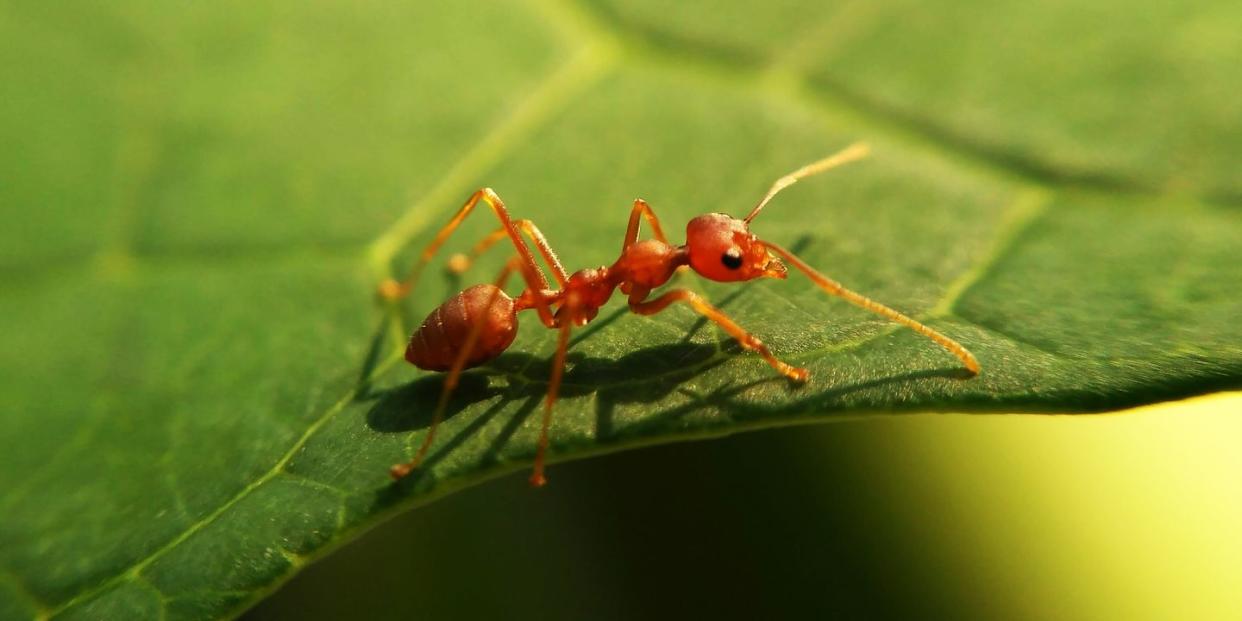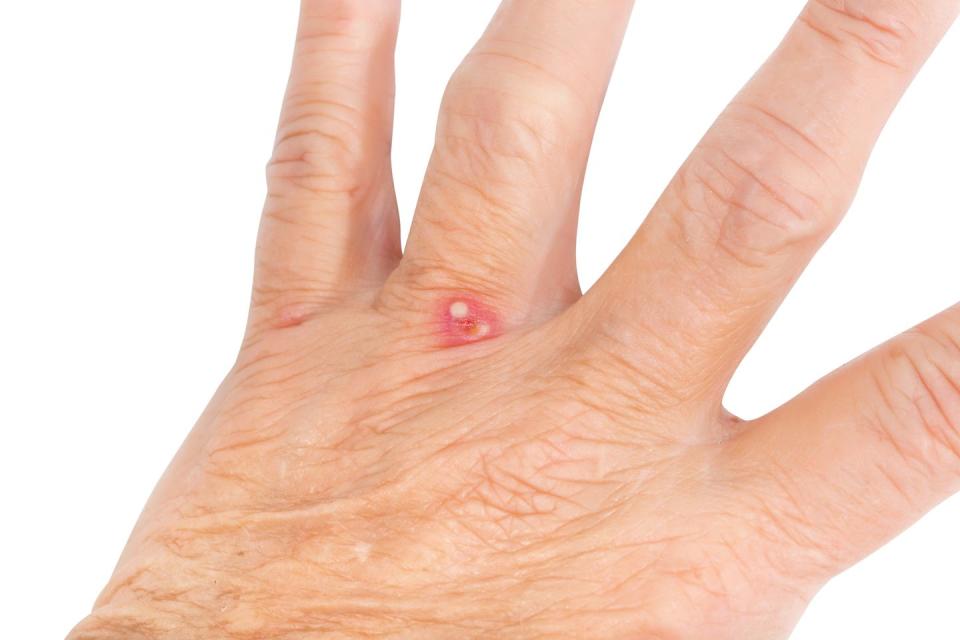What to Do if You Get Bitten and Stung by Fire Ants, According to Experts

Fire ants have an amazing ability to ruin your day, especially because they can bite and sting you at the same time, says entomologist Roberto M. Pereira, Ph.D., an insect research scientist with the University of Florida.
Scientifically known as Solenopsis invicta, these reddish insects are generally a medium size, as far as ants go; worker fire ants can grow up to ¼ inch long. When a fire ant nest is disturbed, they’ll go on the offense and aggressively attack their target, Pereira says.
The result: Painful bites and stings, often many at once. Here’s everything you need to know about what the aftermath looks and feels like, plus the best course of treatment if you’re ever unlucky enough to be attacked by one (or more).
Where do fire ants live?
Fire ants prefer warmer climates and are more common in southern states, says board-certified entomologist Desiree Straubinger, market technical director for Ehrlich Pest Control. “But they can be found as far north as Maryland,” she adds.
They typically build nests in the ground that look like a mound of dirt, which can be up to 18 inches in diameter of soft soil, says Josh Matta, an entomologist for Spectrum Garden Brands.
Fire ants can show up just about anywhere: near buildings, in mulch and gardens, around grassy areas, and hiding in rotting logs. “Usually, they like sunny areas,” Pereira says.
Why do fire ants bite and sting?
Like bees and hornets, fire ants have a stinger that they’ll use to protect themselves or their nest. “They actually will bite you to hold themselves against your body and then sting you with their back end,” Pereira says.
Of course, they mostly sting in defense, says Frank Meek, technical services manager at Rollins, a pest control company. “This occurs when there is a sudden movement of the object they are on, such as a person’s leg,” he says. “When the person swats the ant or tries to brush it off, it reacts in defense by stinging.”
Unlike some bees, fire ants don’t lose their stinger after an attack, and they’re pretty aggressive. “They put the stinger in and will try to pump in as much venom as they can,” Pereira says.
What do fire ant bites and stings feel like?
The venom is “powerful,” says Howard Russell, M.S., an entomologist at Michigan State University, and it explains why fire ant stings can be so painful. While the actual amount of venom a fire ant can deliver is small, many people are often stung by more than one fire ant at once.

In general, the result of an attack will cause a localized reaction. “Fire ant bites can cause significant swelling, burning, and stinging in the skin,” says Joshua Zeichner, M.D., director of cosmetic and clinical research in dermatology at Mount Sinai Hospital in New York City.
Most people end up with a little pimple-like bump or pustule, while some people don’t react at all, Straubinger adds.
But, as with all insect stings, it’s possible to be allergic to the venom and even develop anaphylaxis, a severe, life-threatening reaction, Pereira says. In 2016, a woman in Alabama (who was allergic) died after being attacked by fire ants that were in a hay bale she was sitting on. In 2018, a North Carolina man (who was also allergic) died from shock after being attacked by fire ants.
That said, “fire ants can’t overwhelm a healthy, mobile person and even hundreds of stings are rarely fatal,” per Texas A&M’s Agrilife Research and Extension.
How to treat a fire ant bite or sting
If you have any symptoms of an allergic reaction, like excessive redness, swelling, itching, sweating, and shortness of breath, Matta says it’s important to seek emergency medical care right away. But if you’re just noticing moderate pain and swelling, there are a few steps to take at home:
✔️Brush the ants off of you: “A fire ant is going to stay there until it’s done,” Pereira says, so it could continue to injure you if you don’t get it (or its buddies) off your skin.
✔️Then, wash up: Lather up the area with antibacterial soap and water, says Gary Goldenberg, M.D., an assistant clinical professor of dermatology at the Icahn School of Medicine at Mount Sinai in New York City.
✔️Cool it down: Dr. Goldenberg recommends icing the bite or sting site for five to 10 minutes to tamp down inflammation. “If the area is still inflamed, apply a hydrocortisone cream two to three times daily,” he says.
✔️Pop an OTC med: Itchy and swollen? Taking an antihistamine tablet like Benadryl can help. If you notice inflammation and still feel some pain, you can also take an NSAID, like Tylenol, Dr. Zeichner says.
✔️Check in with a doctor, if needed: Your skin may be red and bumpy for a few days afterward, but if you have significant swelling or pain, or the area where you were attacked starts to ooze pus or forms an ulcer, Dr. Goldenberg says it’s a good idea to see a doctor to avoid a nasty infection.
Support from readers like you helps us do our best work. Go here to subscribe to Prevention and get 12 FREE gifts. And sign up for our FREE newsletter here for daily health, nutrition, and fitness advice.
You Might Also Like

